The Right Tool For the Right Job
The Stability ball, just like Kettlebells, Sliders, the TRX etc. is just another tool in the toolbox.
Here’s a quick reference guide:
Never the time and the place…
Sometimes the time and the place.
The time and the place, a lot of the time
that doesn’t mean MOST…
First things first, When is NEVER the time?
Almost All Lower Body Training
and
Upper Body Strength Work
Why NEVER on the Lower Body?
Cause it doesn’t work like that homie.
Caveat: yes unstable surfaces work well in the rehabilitation of lower limb injuries.
But that’s a case for the Physical Therapists <—–The Rock Categorized this as
See they do what they do…
you are no longer injured…..
you get released…..
then I do what I do…and cut out the standing on wobbly things.
We’ve seen both in research and anecdotally that lower limb training on unstable surfaces makes you slower, weaker and probably increases your chances of getting injured during training and probably doesn’t actually strengthen the core any more than normal loading.
No significant difference was observed for all muscle EMG between unstable and stable surface during all weight load conditions (p > 0.05). Muscle EMG significantly increased when the weight load increased (p < 0.05). Similar muscle activities were observed when subjects performed a deep squat task on a stable and unstable surface. Simply applying unstable surface might not provide extra stimulation to the superficial muscles during squatting in resistance-trained students.– Li, Yongming1; Cao, Chunmei2; Chen, Xiaoping3
Now starts the sciency “why” section, if you don’t care just skip it…but you should care, cause being a brain-dead zombie is a waste o life.
Feed Forward/ Feed Back, Force Grading, Primary Movers and the Size Principle
The Feed Forward system (afferent sensory neurons) takes in a stimulus (sight, touch, hearing) and send the signal to the Feed Back (efferent motor neurons) and movement is produced, well, your reaction to the stimulus…but you get the point.
Force Grading
Smashing the egg……..
This was a major issue in robotics for years.
We could build cool ass robots but they couldn’t pick things up cause they would “smash the egg”, the robots didn’t know how much force was the right amount of force to pick the egg up without crushing it in the process.
That’s something we learn.
It’s called Force Gradation.
Basically, it means you know/ can react/ understand how much tension (force) to create in the skeletal muscles to complete a physical task.
That’s why you crush the egg at first but eventually learn to pick it up without cracking it.
You learned to grade force and adjusted as necessary.
Primary Movers vs Stabilizers:
Getting strong, force production, is about, well…..FORCE.
Gross movement of the human body is about the primary movers (the BIG muscles) creating tension on the bones/ joints and creating motion.
It’s not about the accessory or stabilizing muscles although they do play an important role.
Typically they act as “regulators” and “timers” of the joint.
Working to center the bones in the joint so the primary movers can do what they do best and not run into hard structures (think other bones).
Sometimes they’ll (the stabilizers) take over a movement but it’s gonna be very small/ low force and only 1 joint moving.
Size Principle:
We start small and fire up the chain until we reach a motor neuron (a bunch of muscle fibers and the nerve that activates it) that is large/ forceful enough to complete the task.
So, no matter the movement the little guys fire first, then the middle-sized guys then the big guns.
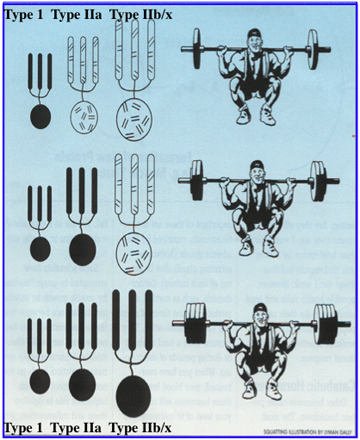 Overly simplistic, but you get the idea. From http://www.unm.edu
Overly simplistic, but you get the idea. From http://www.unm.edu
Joint Centration:
Sloppy joints are not a good thing.
That’s why the stabilizers are important.
But what happens when the forces are more than the stabilizers can handle?
The primary movers activate to take up the slack and help center the joint and limit both joint movement and force production.
Why force production?
- Unstable joints create injuries and your body isn’t stupid.
- Muscles only have so much force production capabilities available. What you take away from output and put to stabilization is gone, no double dipping.
Example of how these concepts work together in real life:
Throw a 2.5lbs weight at me:
- Eyes see weight and appraise the situation Afferent input.
- Brain processes perceived threat and stimulates arm (motor neurons) to move to catch weight Efferent output
- Hand comes into contact with weight motor neurons fire in order from smallest to largest necessary (Size Principle) based off of both the perceived threat and the actual sensory input upon receiving the weight.
- Only small motor neurons are activated because the weight is light, rotator cuff does the work leaving the delts, biceps and pecs turned off (really just turned down).
Throw a 5lbs weight:
- You should know how this goes so I’m skipping steps here.
- Only Small and midrange motor neurons fire because the weight is heavier and the delts and biceps do most of the work.
Here the rotator cuff is used as a stabilizer to center the head of the Humerus so the biceps and delts could absorb the force of the weight without the arm falling out of the socket or hitting a bone.
Throw a 25lbs weight:
- The perceived (and actual) threat is LARGE
- Brain activates the rotator cuff first as a stabilizer, centering the Humerus.
- Delts and biceps next as accessory muscles.
- Pecs and Lats as primary movers with the largest most powerful motor neurons lastly. These will absorb most of the weight during the catch.
Hopefully you can kinda see how Force Grading, the ability to figure out and use the correct amount of force for the job plays into this.
What’s this got to do with my infato-disk?
You see infalto-disk, one or both of two things happens:
Scenario 1:
Signal is sent to brain: “this sh@t’s gonna move when I step on it”
Brain sends signal to leg: “be careful, don’t step down too hard. Too much weight on infato-disk is a bad idea”
Leg grades the force involved at the primary movers (hint: it goes down) to adjust for the unknowns of a moving surface.
Scenario 2:
Signal is sent to brain: “this is going to react as a normal flat/ hard surface.”
Foot steps on inflato-disk and the efferent-afferent pathways lights up because of the input (wobbly surface) output (amount of speed and force used) being different from expected (stable surface).
Brain, adjusts to the unstable surface by changing the role of the primary movers from force output to stabilization in an effort to center the joint.
This ends up decreasing the amount of force the primary movers are capable of putting out and absorbing. <–this means you’re weaker.
Either way, you’re not putting out as much force as you’re capable of.
Which is fine if, IF you’re pretty shitty a beginner, but if you’ve got almost any period of training under your belt,
Don’t Pop the Balls Yet:
There are some times when it’s useful to employ the wobbly things.
Core Training:
In my not so humble opinion the only superior use for the ball is when it comes to core training.
And it’s not because of this BS.
It’s because of exercises like Rollouts, Push Aways, Mountain Climbers and Stir the Pot.
The unstable surface the ball provides during these exercises creates a “chaotic environment” where the core must tighten up and provide stability (that’s what it’s meant to do in the first place) for the spine against the evils of hoop forces.
They are not designed for great length change. Consider the rectus abdominis that has transverse tendons interrupting the series arrangement of sarcomeres. This is to transmit significant hoop stresses, developed in the abdominal wall, transversely through rectus so that it is not ripped apart. – Stu McGill, Super Stiffness
While I wouldn’t ONLY use a stability ball for core training I would include it regularly.
As for the rest of the body, I think the uses are pretty limited:
Upper Body Pressing Prehab and Recovery:
The upper body works in an inherently unstable environment, so while we know we can’t produce as much force using an unstable surface, this may (emphasis on may) help to condition the timing of the rotator cuff and other stabilizing/ accessory muscles.
if you are trying to gain pec strength or chest hypertrophy you would not perform a push up on an exercise ball. That is true. But if you are trying to enhance scapular control during a functional closed chain activity, such as pushing, I think using an unstable surface is beneficial.- Mike Reinold
Pressing on a ball is can be a nice break from consistent heavy loading.
I like to use these for higher reps during deload weeks and cycles (2-3 weeks) or as a high rep accessory movement.
A minimal amount of weight can provide a pretty good pump and challenge to the entire upper body without being very demanding when it comes to recovery.
Pushups on a stability ball force the core and shoulder girdle to go nuts, but don’t do much for the chest.
Again, a good prehab movement but not much on strength.
Keep it as a high rep accessory movement after the heavier stuff or during deloads.
The ONLY Lower Body Exercise I Like the Ball For:
This exercise is great because it uses the hamstrings across both joints, the knee and the hip.
Thing is, these get pretty easy pretty quickly (pretty much once you get the balance point down) and they need to be progressed to the single leg version.
Unfortunately the stability ball gets a bad rap these days because it’s so often used in really stupid inappropriate and ineffective ways.
Like sitting on one at work:
“To be quite frank, I cannot see any advantage or reason for a person to be using an exercise ball as an office chair,” says Jack P. Callaghan, who holds the Canada Research Chair in Spine Biomechanics and Injury Prevention at the University of Waterloo in Ontario.
Although you might expect that sitting on the ball would demand extra exertion to keep you upright and stable, when Dr. Callaghan and his colleagues had healthy young volunteers sit alternately on a ball, an office chair and a backless stool while machines measured muscle activity in their abdomens and lower backs, they found no meaningful differences in the seating options; sitting on a ball did not provide a mini-workout for the midsection.
Ball chairs do not improve posture, either. Research by Dr. Callaghan and others have shown that people generally slump just as much on a ball as in a normal chair and that back pain is not reduced. ” NY Times- Gretchen Reynolds
Understanding the balls strengths and limitations will hopefully allow you to actually get something out of it when you use one.

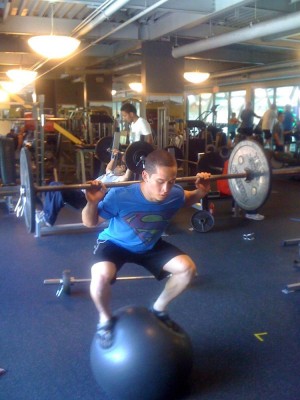
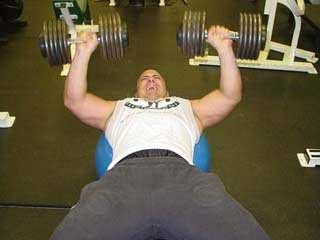
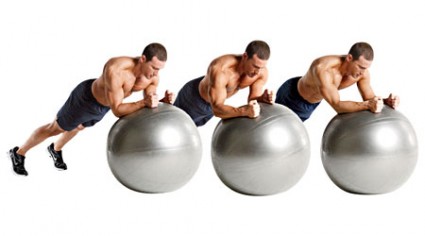
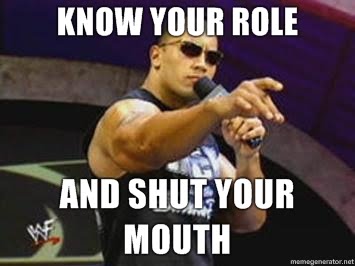
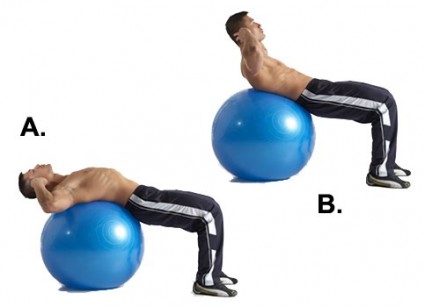


article
There Actually ARE Uses for the Stability Ball | Roy Pumphrey.com